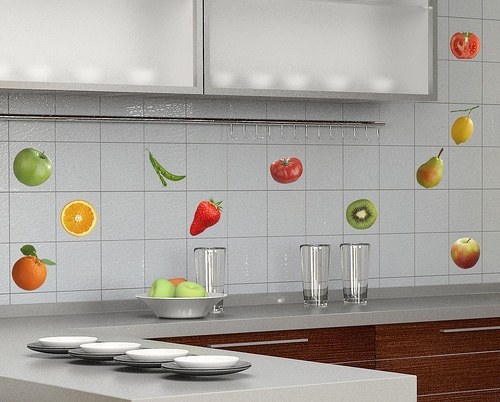You will need
- - metal profiles;
- - metal shears;
- - tile or an angle grinder;
- glue mixture;
- - primer;
- level;
- - spatulas;
- - grout;
- - tiles;
- - anchors;
- crosses sutures;
- - construction area.
Instruction
1
Prepare all the necessary tools and start preparing the walls. Fight off the old tile and clean off the old adhesive with a spatula to cover the bottom of the wall. If the walls had wall paper or putty, remove them completely and wash the walls from the wash. Using a level, check walls for evenness vertically and horizontally. In the case of a large deviation will have the wall plastered.
2
On the cleaned wall make notches with a hammer or chisel. Then go over latex or acrylic primer. Leave to dry wall in one to two hours. If you choose to glue the tiles on the concrete, then the surface should be pre-cover "applying mortar" (the drying time varies from twelve to eighteen hours).
3
Depending on the height of the future of the furniture you will install, determine the lower level of the tile. Measure from the bottom approximately 85-95 centimeters and make a mark. Using the long level, draw a horizontal line along the entire length of the planned paving.
4
Take the metal profile, measure the desired length, cut with tin snips and attach it to the wall level. This profile will help you to keep ideal, a strictly horizontal level, which is an important point in laying the apron.
5
Dilute a small amount of the adhesive with water according to the instruction and mix thoroughly. Start to lay the tile from the bottom up, from the apparent angle. Apply the adhesive with a notched trowel in the place where in the future will be laid tile. Narrow spatula, apply a thin layer of glue on the back side of the tile and set it in place. Easy motion press it into the mortar and lay siege with a rubber mallet.
6
Put the tile horizontally and vertically, using a short level. If it is not level, remove it with a spatula, and put on the glue as needed. The first tile set perfectly and flawlessly, as they will depend on the final result of your work. Pay attention to the pattern on the back side of the tile there is a pointer arrow.
7
Then put the second side of the tile and check its level in the same way. Install the crosses between the adjacent ribs. Fingers check the seam, the transition should not be felt. On the first tile install third, check the angles between the horizontal and the vertical face of the angle bracket. In the same way the rest lay tiles, do not forget to use spacers.
8
In the process of laying the tiles you'll need to cut it to size. This can be done with the lever or tile grinder. At the end of laying of apron remove all crosses and clean up the seams between the tiles, TIC insert in place so that the seams are not straight in the drying process.
9
A day after laying the tiles you can begin to grout. Mix dry mix with water until thick sour cream (make the mixture in small portions, as it is workable for twenty minutes). Moisten the joints and apply grout with a rubber spatula indenting movements. Excess remove in the direction of the seam, after twenty minutes, wipe with a slightly damp cloth.
Note
How to stick tile. Method of application of any adhesive is the same. For this type of work is best suited notched trowel. In the selection of glue for a tile, You will prompt the shopper. Let's start applying the glue to the part of the wall where we will glue the tiles. Cover glue the whole wall is not necessary. With a notched trowel "pilfered" tile adhesive on the wall surface . The adhesive layer should have a thickness of approximately 2.5 mm.
Useful advice
Before you glue the tiles on the wall need to do preparatory work to remove the old coating, make incisions, if necessary, to align the wall primed. To glue the tiles to the wall in two ways, from the center of the wall, in this case, from the corners of the tile will be at the same distance, and from the far corner, in this case, the trim tiles will be minimal. Dilute the glue for tiles, and using a special notched trowel to apply it first on the wall, 1 to 2 per square meter, and then on the tile.
